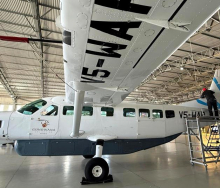The EU’s Entry-Exit System (EES) is to be fully operational by October, followed by the European Travel Information and Authorisation System, which will likely be implemented next year.
The EES will register information about non-EU nationals visiting the region, such as passport details and biometric data, including fingerprints and facial images, reports euronews.com. These details will allow the system to track visitors entering or leaving an EU country, making it easier to identify foreigners whose visas have expired.
Here’s how EU countries are preparing to install or expand the number of automated barriers to roll out the EES:
- France, Germany and Austria will have self-service kiosks at their airports, allowing travellers to pre-register their biometric and personal details.
- Italy has promised to increase the number of its automated gates and add 600 self-service data and biometric collection kiosks to its airports.
- Norway plans to trial automated facial recognition cameras at border gates and airports.
Although the EES is intended to be an efficient means to manage passenger flows through Europe’s airports, the UK’s European Scrutiny Committee has raised concerns that travellers could wait hours to complete their biometric and personal data collection before they cross borders.
“Queues of more than 14 hours; vehicles backed up along major roads; businesses starved of footfall. This evidence paints an alarming picture of the possible risks surrounding the Entry-Exit System’s implementation,” said William Cash, Chair of the European Scrutiny Committee. “Clearly, this policy could have a very serious impact, not only for tourists and travel operators but also for local businesses. I implore decision-makers on both sides of the Channel to take note of this evidence.”
Critics fear that the physical infrastructure (automated gates and self-service data collection kiosks) required to operate EES will not be implemented in time and doubt the border-crossings outside airports will be able to accommodate the amounts of people entering and exiting EU countries during the data collection phase of both non-EU nationals and EU nationals.















